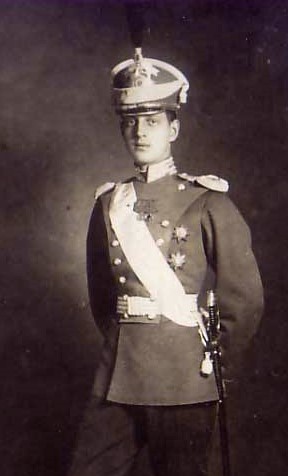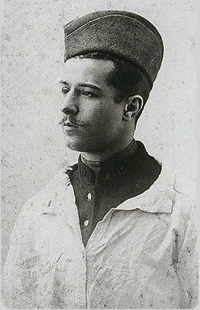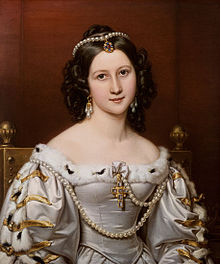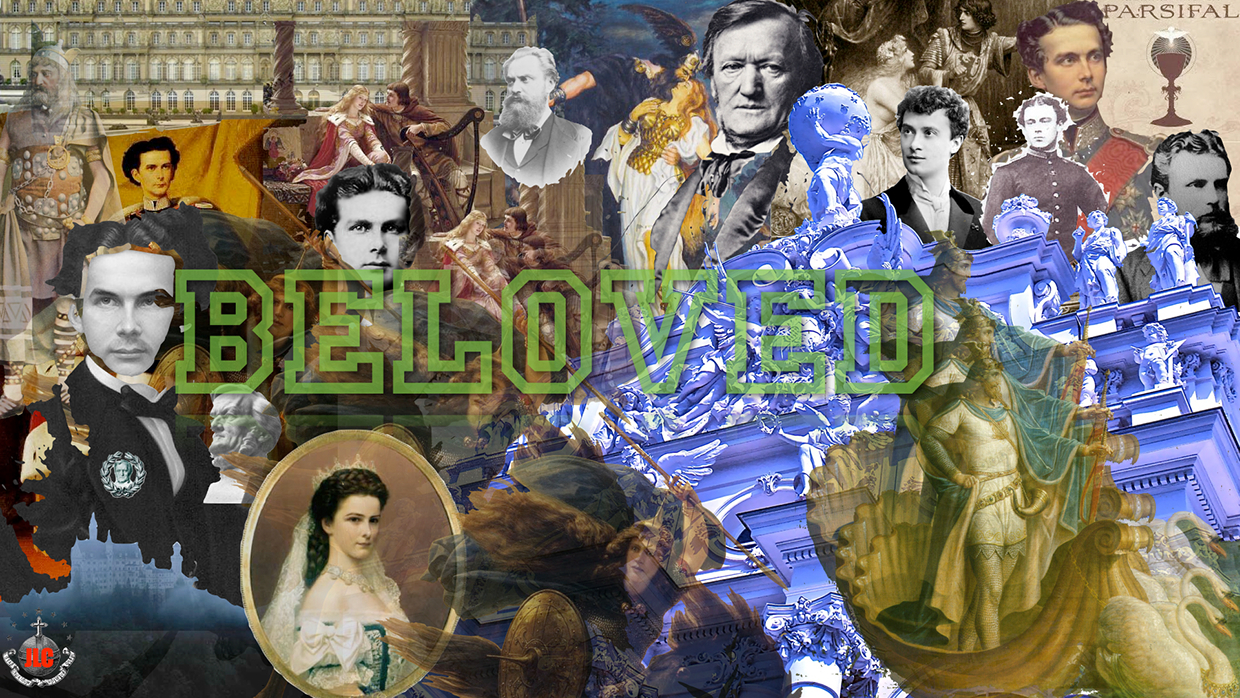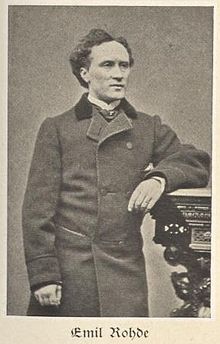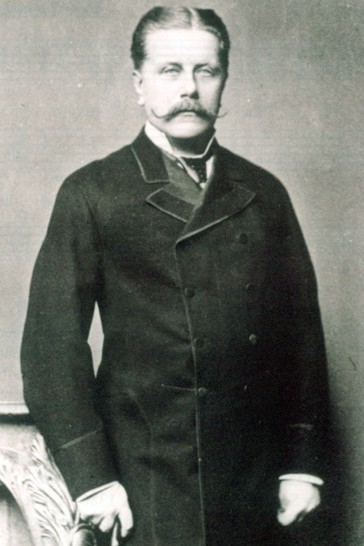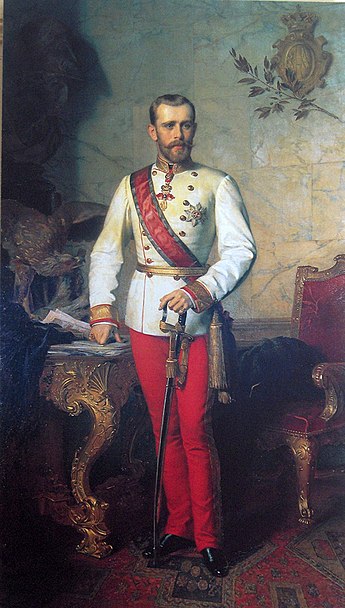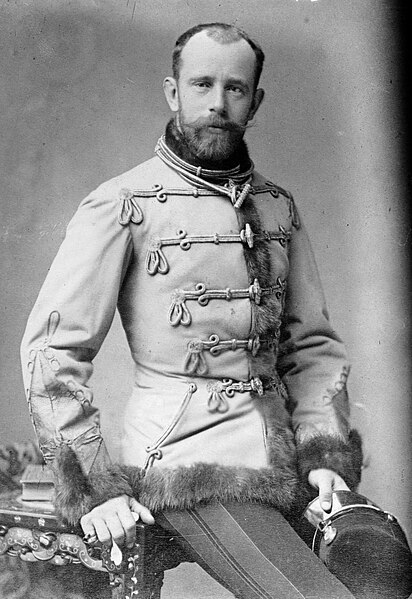 |
| Coco Chanel |
(1883-1971)
French fashion designer.
Lovers' dazzling gifts.
"Chanel had her own collection of dazzling fine jewelry, given to her by Boy Capel (his first lavish present was a diamond tiara; Chanelore says she was naive enough to mistake it for a necklace), Grand Duke Dmitri,, and, of course, Bendor, the Duke of Westminster. Dmitri introduced her to the long chains of gold interspersed with stones that became the hallmark of her look. Bendor would present her with an endless stream of priceless necklaces, brooches, and bracelets studded with Indian rubies, sapphires, and emeralds. While she always deferred to him in the presence of his posh friends . . . she then found it necessary, upon being presented with yet another breathtaking bijou, to take it apart before his eyes, using the stones for something of her own creation, perhaps with poured glass. She loved nothing more than mixing fake stones and real ones just to, you know, keep everyone guessing." (Gospel According to Coco Chanel: Life Lessons from the World's Most Elegant Woman)
Chanel's physical appearance & personal qualities.
Chanel's physical appearance & personal qualities.
" . . . She was not beautiful but had for assets a wide mouth, a long neck, an indomitable temperament. . . . " (Updike: 467)
Chanel's personal & family background.
Chanel's personal & family background.
"The official record shows that her mother, Eugenie, gave birth to Gabrielle on 19 August 1883 in the poorhouse in Saumur, a market town on the river Loire. Eugenie (known as Jeanne) was 28, and listed as a marchland, or merchant, on Gabrielle's birth certificate. They were not yet married but already had one daughter, Julia, born less than a year previously. Gabrielle Bonheur, a nun in the hospice where Chanel was born, was made her godmother, and, so according to Chanel, 'I was baptised Gabrielle Bonheur Chanel'. Gabielle she stayed throughout her childhood. -- Coco was a creation that came later -- although she invented a story that is revealing in its untruths: 'My father used to call me 'Little Coco' until something better should come along,' she told Marcel Haedrich (editor-in-chief of Marie-Claire). 'He didn't like [the name] 'Gabrielle' at all; it hadn't been his choice.' . . ." (Telegraph)
Coco's lovers as "marketing tools".
"Before his death, Boy had introduced Coco to a woman of the arts, Misia Sert, who would become friend, mentor and fan. A Russian intellectual, Sert was enchanted by the Coco's style and chic. . . They became friends and Misia opened many doors to the arts and artistic men. It wasn't long before Misia introduced her single friend to Sergei Diaghilev, Igor Stravinsky and Grand Duke Dmitri. All became Coco's lovers and companions, accepting monies from her in exchange for providing her access to upper-class Parisian society. The Grand Duke was put on the payroll of the House of Chanel. It paid huge dividends as this member from the former Russian royalty attracted many wealthy women to the House of Chanel...." (Landrum, p. 51)
Coco's lovers were:
1) Arthur Capel (1881-1919)
Lover in 1909-1918.
English industrialist & polo player.
1) Arthur Capel (1881-1919)
Lover in 1909-1918.
English industrialist & polo player.
"In 1908, Chanel fell in love with Arthur Capel, Balsan's riding partner and friend. Nicknamed 'Boy,' Capel was from the English upper class---handsome, rich, and mercurial. In 1908, Boy installed Chanel in a Paris apartment and helped her to launch a business making ladies' hats. Balsan may have lost a mistress---and he had many---but he would remain friends with Chanel for a lifetime. Boy Capel and Chanel were now soul mates. A generous Capel arranged for his mistress's nephew, Andre Palasse, to attend a fine English boarding school after his mother, Chanel's older sister, Julia-Berthe, committed suicide. Later, when Chanel moved into ladies' fashion wear, Capel would finance boutiques for her in Paris, Deauville, and Biarritz." (Sleeping with the Enemy: Coco Chanel's Secret War: 8)
"His affair with Chanel apparently lasted from 1909-1918 when as a friend of her then lover Etienne Balsan, he became acquainted with Balsan's 26-year-old mistress. Capel financed Chanel's first stores and his own clothing style, notably his blazers, inspired her creation of the Chanel look. The couple spent time together at fashionable resorts such as Deauville, but he was never faithful to Chanel." (Adriana Sassoon)
"In 1909, Balsan allowed her to establish a millinery shop in his Paris apartment. While in Paris, Chanel met Englishman Arthur Capel, one of Balsan's friends and had an affair with him. Capel gave her the financial backing she needed to open a boutique at 21 Rue Cambon in 1910. Chanel did the rest, and by 1912, celebrities and actresses were wearing her hats -- she had found success. . . ." (The Invisible Mentor)
"His affair with Chanel apparently lasted from 1909-1918 when as a friend of her then lover Etienne Balsan, he became acquainted with Balsan's 26-year-old mistress. Capel financed Chanel's first stores and his own clothing style, notably his blazers, inspired her creation of the Chanel look. The couple spent time together at fashionable resorts such as Deauville, but he was never faithful to Chanel." (Adriana Sassoon)
"In 1909, Balsan allowed her to establish a millinery shop in his Paris apartment. While in Paris, Chanel met Englishman Arthur Capel, one of Balsan's friends and had an affair with him. Capel gave her the financial backing she needed to open a boutique at 21 Rue Cambon in 1910. Chanel did the rest, and by 1912, celebrities and actresses were wearing her hats -- she had found success. . . ." (The Invisible Mentor)
" . . . Through him [Balsan], she met another man, an Englishman, named Captain Arthur Edward “Boy” Capel. Arthur Capel and Coco Chanel had an affair that lasted nine years, and it was Capel that encouraged Chanel to start her own hat making business, and later become a couturier. The two were in love, though Capel was already married at the time, and died in a car crash in 1919, leaving Chanel devastated." (Mango Moustache)
2) Dmitri Pavlovich of Russia (1891-1942)
Lover in 1922."By spring of 1922, Dmitri was Gabrielle's lover. She gave him money and had him come with his 'man,' Piotr, to live with her in Garches. He gave her the Romanov pearls he had managed to save when he fled the Revolution. She made copies of them and launched the fashion of long strands of fake or real pearls. To be alone with him, she brought a property in the Landes, the isolated stretch of pineland coast between Bordeaux and Biarritz. Eight years younger than Gabrielle, Dmitri was an eccentric spoiled brat. It is doubtful that Coco ever mentioned the hospice in Saumur where she was born, the orphanage in Aubazine, or her start in the beuglant in Moulins, but in their own way, Dmitri's beginnings were as troubled as hers. . . ." (Chanel: A Woman of Her Own)
"Chanel's lover at the time was the Grand Duke Dmitri, who was dependent on her financial support. . . ." (Telegraph)
Dmitri's physical appearance & personal qualities: " . . . Dmitri seemed destined for a life of triumph and pleasure. He was strikingly good looking, tall, and athletic, with deep green eyes and the kind of chiseled profile associated with aristocracy. 'Dmitri was extremely attractive,' wrote his cousin and boyhood companion (and possible lover), Prince Felix Youssoupoff. 'Tall, elegant, very 'race,' his look recalled the ancient portraits of his ancestors.' . . . ." (Chanel: A Woman of Her Own)
"The Czar's nephew---cousin to England's Prince Edward---was a tall and very handsome man. Coco fell for his green eyes, his long, elegant hands, and, in their intimacy, his shyness. . . ." (Chanel: A Woman of Her Own)
The lovers' idyll.
"Chanel's lover at the time was the Grand Duke Dmitri, who was dependent on her financial support. . . ." (Telegraph)
Dmitri's physical appearance & personal qualities: " . . . Dmitri seemed destined for a life of triumph and pleasure. He was strikingly good looking, tall, and athletic, with deep green eyes and the kind of chiseled profile associated with aristocracy. 'Dmitri was extremely attractive,' wrote his cousin and boyhood companion (and possible lover), Prince Felix Youssoupoff. 'Tall, elegant, very 'race,' his look recalled the ancient portraits of his ancestors.' . . . ." (Chanel: A Woman of Her Own)
"The Czar's nephew---cousin to England's Prince Edward---was a tall and very handsome man. Coco fell for his green eyes, his long, elegant hands, and, in their intimacy, his shyness. . . ." (Chanel: A Woman of Her Own)
The lovers' idyll.
" . . . For the summer of 1922, Coco rented a villa in Moulleau on the Bay of Arcachon, west of Bordeaux. The Atlantic thundered against the garden wall, and for two months she and Dmitri enjoyed the sun and the sea. A fishing boat took them out for a swim every morning. Afternoons were spent walking on the beach, evenings gambling at the Arachon casino or having Monsieur Joseph and Piotr prepare oysters right out of the bay. Coco listened to the rest of Dmitri's story, how the czar had put an end to the brother and sister's devotion to each other by marring Maria to Prince Wilhelm of Sweden, the young son of King Gustav V, how Dmitri's banishment to Persia following Rasputin's murder save his life in 1917, while the ruthless logic of the Soviet revolution resulted in his father being executed in a last roundup of Romanovs in 1919." (Chanel: A Woman of Her Own)
Affair's end & aftermath.
Affair's end & aftermath.
"The move from the villa in Garches to 29 Rue du Faubourg also coincided with the petering out of the affair with Dmitri. There were no scenes, and late in life Coco would speak of the duke, and of other Romanovs she had known, as big, handsome men of little substance. 'Those Grand Dukes were all the same---they looked marvelous but there was nothing behind. Green eyes, fine hands and shoulders, peace-loving, timorous. They drank so as not to be afraid . . . behind it all---nothing, just vodka and the void.' Dmitri was looking for a rich woman to support him and Coco had no intention of being the one. Audrey Emery was an American heiress who found hum and his name and title sufficiently alluring to marry. Audrey could afford him, too, She was one of the three sisters from Cleveland, heiresses to the Benjamin Moore paint fortune." (Chanel: A Woman of Her Own)
3) Etienne Balsan (1878-1953)
French socialite & heir.
Son of: Auguste Balsan, a wealthy manufacturer & member of the National Assembly & Marie Dupuytrem.
3) Etienne Balsan (1878-1953)
French socialite & heir.
Son of: Auguste Balsan, a wealthy manufacturer & member of the National Assembly & Marie Dupuytrem.
Husband of: Susanne Bouchard, mar 1920
"By the age of twenty she had achieved the next social step up from shop girl and amateur entertainer and become a kept woman. Her keeper was the infantry officer Etienne Balsan. His is the first name we encounter in her pilgrimage from man to man. A devoted horseman, an indifferent soldier, the good-humored heir of a textile fortune accumulated in Chateauroux, he encouraged Chanel to pursue her possible stage career at Vichy... His parents had recently died, and with his inheritance he purchased an estate called Royallieu...and invited Chanel to join him there. . . ." (Updike: 467).
"Around the age of 20, Chanel became involved with Etienne Balsan who offered to help her start a millinery business in Paris. She soon left him for one of his even wealthier friends, Arthur 'Boy' Capel. Both men were instrumental in Chanel's first fashion venture." (Striking Divas)
"While working at the House of Grampayre, she also held a part-time job working at a tailor shop where she met many soldiers who frequented La Rotonde, a local cafe. She went to La Rotonde with them and that's where she met Etienne Balsan, a soldier and horse breeder from a wealth French family. In 1906, Balsan invited Chanel to his horse farm; she accepted and decided to stay there on his vast estate. While there she met an affluent crowd, and she learned how to ride expertly. Chanel designed and made the most beautiful hats for her self that the affluent women she met wanted the same designs for themselves. This was great publicity for Chanel because the tabloids took note and wrote about the styles." (The Invisible Mentor)
" . . . During her teenage years, Chanel worked in Deauville, France, on the north coast, at a hat factory. She attracted the attention of a young officer, Etienne Balsan, and soon became his mistress. He helped her open her own millinery (an old-fashioned term for a ladies' hat shop) in Compiegne, France. It was badly timed, though, because World War I broke out shortly afterward. . . ." (Kuhlman: 90)
"While singing didn't prove to be Chanel's forte, the experience was valuable in that it introduced her to Etienne Balsan, a gentleman horse breeder and riding enthusiast, and accepted his proposal to live together. She would enjoy her life in a castle, even though she would never get used to her position of an official mistress. What did she really want? To make a career for herself as a milliner. She approached Balsan with a business proposition. With more money than he knew what to do with, Balsan decided to give Chanel the money she needed to open up her own hat and dress shop in Paris." (Tanya)
 |
| Hans Gunther von Dincklage |
Lover in 1940-1950
German military officer." . . . During the German occupation of France, Chanel got involved with a German military officer, Hans Gunther von Dincklage. She got special permission to stay in her apartment at the Hotel Ritz. After the war ended, Chanel was interrogated by her relationship with von Dincklage, but she was not charged as a collaborator. Some have wondered whether friend Winston Churchill worked behind the scenes on Chanel's behalf." (Striking Divas)
"At the start of World War II in 1939, Chanel dismissed all her staff and closed House of Chanel, but continued to sell Chanel No. 5. Nazi forces took over France, and Chanel got romantically involved with Hans Gunther von Dincklage, a German diplomat and suspected Gestapo agent and labelled a collaborator. She was arrested but not charged. In 1946, Chanel and von Dincklage moved to Lausanne, Switzerland where she remained in exile for eight years. . . ." (The Invisible Mentor)
" . . . She met the wealthy duke of Westminster aboard his yacht around 1923, and the two started a decades-long relationship. In response to his marriage proposal, she reportedly said 'There have been several Duchesses of Westminster---but there is only one Chanel!'" (Mercy)
"Another important romance for Chanel began in the 1920s. She met the wealthy duke of Westminster aboard his yacht around 1923, and the two started a decades-long relationship. In response to his marriage proposal, she reportedly said 'There have been several Duchesses of Westminster---but there is only one Chanel!'" (Striking Divas)
 |
| Villa La Pausa @ Houses With a History |
"The house was built in 1929 after Coco's then lover, (the very generous) Duke of Westminster bought her a plot of land in Cap Martin after spotting it together while sailing around the riviera (sic) on his yacht (as you do). Coco had architect Robert Streitz take inspiration from the Cistercian convent orphanage where she grew up, but on the vaulted brick ceilings you would also find the crown from the Duke of Westminster's coat of arms. Their love affair ended in 1933, ten years after they met in Monte Carlo, but as you might have guesses, Chanel kept the house. Talking about her separation with (sic) the Duke, Coco was famously quoted as saying, 'There are a lot of duchesses, but only one Coco Chanel.'" (Messy Nessy Chic)
6) Igor Stravinsky (1882-1971)
Lover in 1921.
' . . . In 1921, she was already involved with a besotted, highly jealous (and married) Igor Stravinsky, whose work for the Ballets Russes she was subsidizing while housing him and his entire family at Bel Respiro. Coco's sudden zeal for a seaside vacation with Dmitri may have stemmed simply from her desire to avoid Igor and his possessiveness. Chanel also likely worried that her dignity would suffer if her financial upkeep of another bankrupt Russian became public knowledge." (Chanel: A Woman of Her Own)
" . . . For a time, Chanel had a relationship with composer Igor Stravinsky." (Striking Divas)
Lover in 1921.
' . . . In 1921, she was already involved with a besotted, highly jealous (and married) Igor Stravinsky, whose work for the Ballets Russes she was subsidizing while housing him and his entire family at Bel Respiro. Coco's sudden zeal for a seaside vacation with Dmitri may have stemmed simply from her desire to avoid Igor and his possessiveness. Chanel also likely worried that her dignity would suffer if her financial upkeep of another bankrupt Russian became public knowledge." (Chanel: A Woman of Her Own)
" . . . For a time, Chanel had a relationship with composer Igor Stravinsky." (Striking Divas)
Husband of:
1. Jeanne Dirys, mar 1911, div 1918, a famed vaudeville actress
2. Maybelle Hogan, an heiress, sep 1928
2. Maybelle Hogan, an heiress, sep 1928
"By then, Coco had another reason for being curious about the world of the movie industry. That winter, she had a new lover, and this time he was a man who had Hollywood connections. She had thrown herself into a liaison with the fashion illustrator, political satirist, and Hollywood set designer Paul Iribe, the illustrator and sometime-journalist who had famously sketched the dresses of her competitor Paul Poiret. Coco Chanel and Paul Iribe had known each other for decades, and they had an entire circle of friends in common. . . ." (Mazzeo: 127)
"Chanel's next noteworthy lover was Paul Iribe, a chubby, complicated. . . Basque cartoonist from Angouleme, who designed for her an array of antic, expressive jewelry. Hotheads the same age, they might have married, but in 1935 he collapsed before her eyes, on the tennis court of her Riviera villa, La Pausa, and died a few hours later. . . ." (Updike: 469)
"Coco had fun letting herself be seduced by Iribe. Self-assured and possessed of a roguish charm and a mordant wit, he challenged her to go to bed with him. He was someone for whom questions of origin didn't count---a man who, in that respect, was the opposite of Boy Capel, Dmitri, and Bendor. For over a year almost no one knew of the affair. He made no moves to divorce Maybelle, yet rumors circulated that Chanel was ready to marry him." (Chanel: A Woman of Her Own)
"Chanel's next noteworthy lover was Paul Iribe, a chubby, complicated. . . Basque cartoonist from Angouleme, who designed for her an array of antic, expressive jewelry. Hotheads the same age, they might have married, but in 1935 he collapsed before her eyes, on the tennis court of her Riviera villa, La Pausa, and died a few hours later. . . ." (Updike: 469)
"Coco had fun letting herself be seduced by Iribe. Self-assured and possessed of a roguish charm and a mordant wit, he challenged her to go to bed with him. He was someone for whom questions of origin didn't count---a man who, in that respect, was the opposite of Boy Capel, Dmitri, and Bendor. For over a year almost no one knew of the affair. He made no moves to divorce Maybelle, yet rumors circulated that Chanel was ready to marry him." (Chanel: A Woman of Her Own)
8) Sergei Diaghilev.
